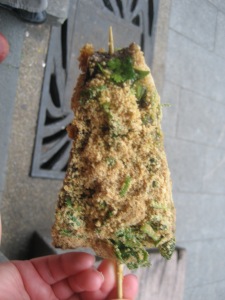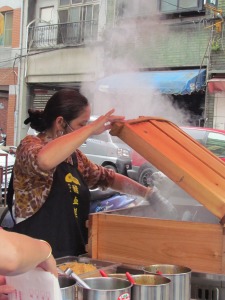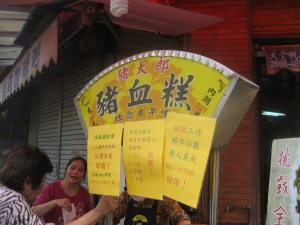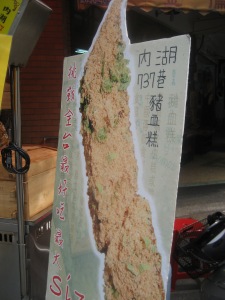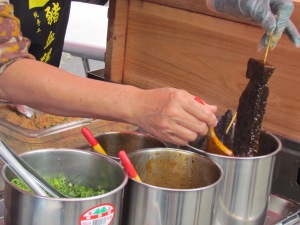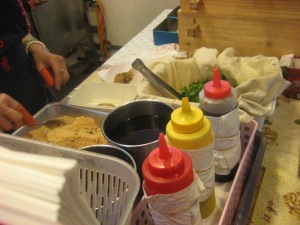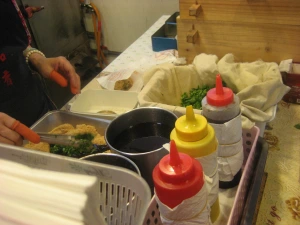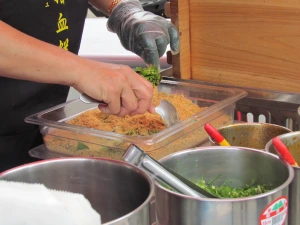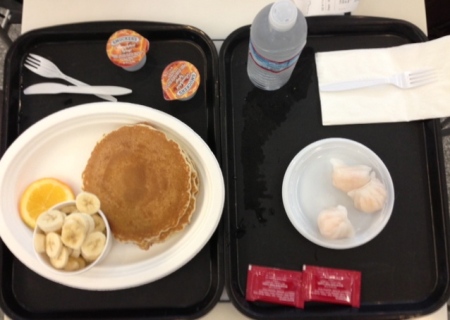Last post, I wrote about sweet and savory street snacks involving peanut powder and cilantro.
Pork blood on a stick is a distinctively Taiwanese street snack.
The first time I had this was at Minquan Lao Jie in Sanxia, another preserved old-style business district. The local junior high school was letting out and some kids stopped by for an after-school treat. It would be like swinging by Sturbridge Village or Disneyland for an afternoon snack, except that the vendors aren’t in costume or in character. The seller said they’d have to come back later as the blood was still in the steamer.
The kids went off and got ice creams (served in longhorn pastries, another local specialty—unfortunately I don’t have a good photo of this, but they’re all over Taiwan) then came back for fresh salty snack.
Although it’s called zhu xue gao, pig blood cake, it really isn’t a “cake” in the American sense of the word. There’s no crumb to it—I think the word “cake” is used more in the sense of “cake of soap” or “caked-on mud”. Not just congealed pig blood, it’s primarily glutinous rice stuck together with said blood, and steamed in trays.
It is then cut up into rectangular or isosceles triangles, covered with peanut powder and cilantro and hot sauce (optional), impaled on a stick, and handed to you in a paper wrapper for cleaner consumption.
Although versions are served in restaurants, nothing is as satisfying as the real deal on a stick, bought from a street vendor that really knows her stuff, for less than $2US.
Long ago, a friend described the blood pudding common on Irish breakfasts to taste “like a scab”. Pork blood on a stick doesn’t have quite the same ferrous taste. It has a rich saltiness and the enjoyment may be more about the chewy texture complemented by the peanut powder, or local nostalgia. If you don’t think you can stomach an entire one, buy one to share!
